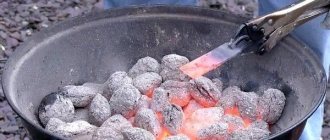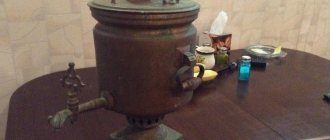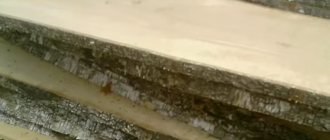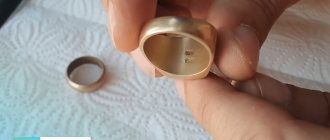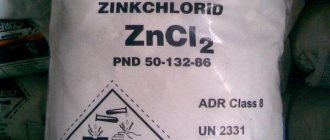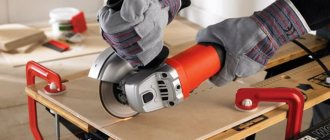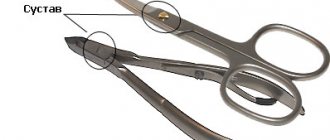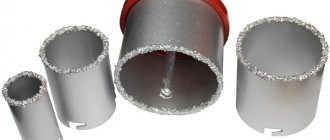Methods for restoring a samovar, useful tips for beginners
The samovar is a symbol of home comfort, warmth and prosperity, known since the time of Peter the Great. Modern products that run on electricity do not provide much value. Heating devices (coal and kerosene) are of much greater interest. The restoration of samovars will help you feel the life and mood of your ancestors, which will breathe a second life into your grandmother’s dishes. However, prices for this service are not always affordable, since craftsmen consider such items to be antiques. Armed with tools and patience, you can repair your family heirloom yourself.
The first stigma and its development
Handicraftsmen began to put such marks on some parts of the product. Most often, the imprints were the names of the creator, or the name of the city where the product was made. After samovars received mass production, the mark began to reflect the place where the product was produced, indicated the name of the owner of the factory, the master who made it, as well as the order according to which the samovar was created. Most major device manufacturers also made special prints that displayed the awards that the model received at the show.
The stamp, as well as the area of the samovar where the stamp will be placed, was heated to a certain temperature. Afterwards, the stamp was applied to the desired area and the master, using a hammer, made a strong blow. However, the inscription was not very deep, which is why it was erased quite quickly over time, since at that time the most common type of surface cleaning was sanding.
The largest samovar manufacturers had individual marks that were registered by government authorities. Naturally, counterfeit goods were also created that bore the marks of large factories. Nowadays, you can often find such “fake” stamps on antique models. Nevertheless, it is quite easy to distinguish counterfeit models from the original: the presence of serious deviations in the design of the state emblem, as well as if the phrase “successor” was indicated next to the names of the factory owners, and so on. The name of the real manufacturer was deliberately stamped out in small print or deliberately erased.
Factory owners tried to diversify the prints by adding their family coats of arms to the image. For example, products from Teile had an engraving of a cannon. Often, every antique samovar has a mark that is placed on the body, on its lower half. All marks repeat the outlines of prizes and medals that were won at exhibitions. It is unknown where this trend came from, but it can be argued that the stamps of medals and stamps increased the consumer’s trusting relationship with the manufacturer. Today, it can be argued that stamps on samovars are one of the traditions of producing these devices.
The stamps that were applied to samovars are examples of medals that the devices received at exhibitions. The manufacturer was required to do only one thing: to present all types of its own products at the exhibition, and of all the competitors, only the best were awarded.
Exhibitions were held every year, and there were many types: fair, provincial and district. In addition, we can also distinguish the following types of exhibitions: artistic, individual, specialized, industrial and agricultural.
If the samovar bears the mark of these exhibitions, then it did not bring much value to the product. Medals that were awarded at world or all-Russian exhibitions are still especially valued. Such events were held only in large cities, and the exhibition was held very rarely - once every 10 years. Only high-quality and attractive products could take part, so not all factories participated
Much attention was also paid to the material from which the samovar itself was created. He must be from Russia. In addition, all workers must have Russian citizenship, and the factory is fully equipped with modern technology.
When may restoration be required?
The main problems that may require restoration are: the appearance of dents, distortions, scale, loss of shine, the need for tinning or replacement of parts. If you purchase a tea maker second hand, you should carefully examine its internal condition. Even with no external defects, the samovar can leak. The cause is barely noticeable microcracks. In this case, restoration work on the metal product should be carried out immediately.
The brass alloy releases oxides that are harmful to the body. To prevent them from getting into the water, the internal cavity of the device must be coated with special food-grade tin (cleansed of lead and other metal impurities).
In addition, a leaking samovar is dangerous because indelible rust appears in place of the cracks. Its pores contain a large number of bacteria harmful to the human body. Iron is also present in high concentrations in water with rust. Regular consumption of such liquid will affect the functioning of the kidneys and liver. Metal in large volumes is poorly excreted from the body, so poisoning is inevitable.
In the old days, they did not know how harmful lead was to the body. The craftsman soldered dishes using this metal, without thinking about the consequences.
Soldering the pipe
Tinning the samovar
In order to protect metal products from oxidation, their inner surface is coated with tin. This method of processing dishes is called “tinning”, and the applied layer of metal is called “half-dish”. To reduce tin costs, bismuth is additionally used. Lead impurities, as well as poisonous salts, are prohibited from being used in the process of preparing poluda.
Tinning a samovar is a simple procedure that prevents the formation of corrosion on metal surfaces. The step-by-step instructions are as follows:
- In order for the tin to lay down better, the inner surface of the dishes must be well cleaned. It is advisable to use an iron brush - it will quickly remove dirt and oxidation.
- Next, the metal product is thoroughly washed with running water.
- The dried internal cavity of the samovar is treated with ammonia.
- Next, a little tin is placed in the heated dish. The metal should evenly cover all the walls of the vessel. After this, you need to wait for the half to dry completely and set.
It's better to tin on the street. If this is not possible, be sure to turn on the hood and open the windows. During restoration work, a lot of smoke will be generated.
Fighting scale: simple ways to remove plaque
To remove scale from a samovar, you can use almost any chemical that modern hardware stores offer us. You should choose a product with a minimum number of ingredients.
Also, such a very original remedy as the Sprite drink will help get rid of plaque. It should be boiled in the bowl of a samovar for several minutes.
Acetic acid is no less effective at removing scale. Pour a bottle of this substance into the samovar, add water so that the bowl is filled to the top, and heat the resulting substance to 60 degrees. Then put out the fire and leave the solution in the samovar for an hour. After this, pour out the water and rinse the product - the walls of the samovar will shine with newness!
Another method that is often used to combat scale is boiling citric acid. To implement this method you will need only 30 grams of lemon. Boil water with acid and leave it in the samovar for 10–12 hours. After this, rinse the samovar with clean water without any cleaning agents. The result will be noticeable after the first procedure.
All of the above methods are effective, but their effectiveness depends on the degree of contamination of the samovar. If you fail to remove plaque the first time, repeat the procedure.
Remember - a forbidden technique in the fight against plaque is a metal brush and a knife. The use of these tools will lead to deformation of the walls of the samovar.
How to get rid of scale in a samovar: the right method
Without solving this problem, repairing the samovar is not possible. Scale is a sediment that appears as a result of boiling low-quality water. In fact, you can use synthetic products from the mass market designed to remove scale from electric kettles. But you can also make your own anti-scale product or several at once.
To get rid of scale in a samovar, you will need:
- Any store-bought product with a minimum of ingredients (cheap and relatively natural);
- Lemons;
- Lemon acid;
- Vinegar;
- Potato peelings.
The first method is the simplest, but not the most environmentally friendly. Subject the samovar to the actions prescribed by the instructions on the device. Be sure to rinse it with water after all manipulations are completed.
Second method: pour a whole bottle of acetic acid into a filled samovar, heat the water in the samovar to 60 degrees, do not boil. Let this mixture sit in the samovar for about an hour, then rinse off. Other acids should not be used, they are more aggressive. That is, their danger lies not only in particles that may remain on the walls of the samovar, but also in toxic vapors during the action of acid.
Tinning the inner surface of the samovar is a complex and important stage of restoration
The older the samovar, the more its inner surface oxidizes. You can understand that the oxidation limit has reached its maximum “by eye” by looking inside the samovar. A dark film on the surface of the metal is evidence of the appearance of oxidations dangerous to human health, which can be eliminated using the tinning procedure, i.e. coating the inner walls of the samovar with tin.
To tinning metal, follow the following algorithm:
- Rub the inner bowl of the samovar with sandpaper.
- Rinse the cleaned surface thoroughly with water.
- Rub the metal with soldering acid or simply ammonia.
- Heat the water heater on the stove, melt a small amount of tin in its bowl, and wrap the entire inner surface of the samovar with metal using tow (linen fiber).
This procedure should be carried out several times until the inside of the entire samovar is covered with a layer of tin of the same thickness.
Note: for tinning it is better to choose pure tin, without any impurities. You can coat not only the inside of the bowl with metal, but also all elements of the samovar that come into contact with water.
Tinning a samovar: we do it ourselves
Metal utensils have one not very pleasant property - air and ordinary food products act in such a way that over time the surface of such utensils oxidizes. And oxidation entails covering the surface with a film, which poses a certain threat to human health.
To prevent such a misfortune from happening to your samovar, you need tinning. That is, the surface of the samovar, the one that comes into contact with water, will be covered with a layer of metal that is less susceptible to external influences. Most often, such a layer is represented by tin, and the process of coating with tin is called tinning. By the way, not only a samovar, but also an ordinary pot, a cast iron pot, can be subjected to this preventive procedure, which is neither particularly expensive nor very complicated.
Tinning a samovar at home:
- Clean the inner surface of the samovar with sandpaper - dirt and oxidation will probably accumulate there.
- After this, the inside of the samovar must be rinsed very well with water.
- Then you need to rub the inside of the samovar with either ammonia or soldering acid.
- After this, place the samovar on the stove, melt a little tin in it and rub it thoroughly with tow. A layer of poluda (tin coating) should be on the entire internal surface.
- At the end of the work, you must make sure that there is a layer of tin on the entire inner surface, dense and uniform.
If possible, use pure tin for tinning, without harmful impurities such as lead and zinc. Tin can cover not only the inner layer, but also all parts of the samovar that come into contact with water.
Returning the shine to the samovar
To make the outer surface of the samovar shine, it can be treated with polish. When buying this substance in a store, pay attention to the instructions - it is important that the product is compatible with the type of metal from which your samovar is made. Polishes allow you to clean the metal walls of the product from dirt, and at the same time cover them with a special protective film.
The polish may not be effective if the deposits on the metal are too thick. In this case, the walls of the samovar will have to be sanded. This procedure is extremely undesirable for antique products, because it can lead to a decrease in the strength of the metal, and even to the appearance of holes in it.
If you are not a supporter of the use of chemicals and polishing, check out the folk methods of “rejuvenating” samovars:
- Rubbing the samovar with sand. We wash the samovar with warm soapy water, dry it and rub it with the finest river sand, sifting it in advance.
- Rubbing the samovar with soda or chalk. Soften regular baking soda with water and rub the samovar with it until shiny. The same can be done with chalk. It is believed that soda cleans metal faster, but with excessive pressure it can leave scratches on the walls of the samovar. At the same time, it is almost impossible to damage the metal with chalk.
How to use lemon and potatoes to save a samovar from scale
There are a couple more reliable methods that will solve the problem.
You can remove scale like this:
- Lemon acid. Pour thirty grams of lemon into the samovar. You need to boil the water and leave this solution in the samovar for 10-12 hours. Then rinse the samovar thoroughly without any special means.
- Lemons . Cut 4-5 lemons into circles or slices and throw them into the samovar. Fill with water and boil. And then, as in the lemon method, the water and lemons will “work” for 12 hours, after which you drain it along with the scale and rinse it with water.
- Peeling potatoes . Place the well-washed peelings inside the samovar. Fill with water, boil, leave for 5-10 hours. Then wash the walls with soda and a sponge.
Each method is effective. A forbidden technique is a metal brush or knife. You simply deform the walls of the samovar; fighting scale is not worth such sacrifices.
Faucet repair
In old samovars, the faucet is often stuck or leaking. You can solve these problems as follows:
- If the faucet does not turn, you can lubricate it with WD-40. After this, wait a few minutes and tap the faucet handle through a wooden block to activate it.
- If the faucet key is leaking from below, it means it is set too high. This can be corrected using “Valve” paste. It is necessary to remove the faucet, wash it, rub it with paste, and install it back. Then fill the samovar with boiling water and turn the tap in a circle until it “sits” in its place. The main thing is to act smoothly so that the key does not fall inside.
- If the faucet key is leaking from above, it must be replaced with a new one; there are simply no other options for action in such a situation. It looks like the faucet body has worn out and shrunk in size.
Descaling using traditional methods
To get rid of scale, you can use special products containing organic acids. They effectively remove stubborn limescale deposits without scratching the inside surface of the cookware. If you don’t have a special powder on hand, you can use improvised means, such as vinegar. It is diluted in water in a ratio of 1:5, the resulting mixture is filled with a vessel for some time (until the scale is completely dissolved).
Baking soda is an excellent remedy for removing hard deposits. For 1 liter of water you need to take 3 tablespoons of loose powder, boil the resulting mixture in a samovar for about 20 minutes, then pour everything out and repeat the procedure, but by adding vinegar essence (1/2 cup of the product per 4 liters of liquid).
Potato peelings are faithful helpers in the fight against scale. The samovar needs to be filled one-third full with them and covered to the top with water. After boiling, the vessel should be left filled with cleaning fluids for several hours. After this, the samovar must be thoroughly rinsed with soda solution. Regular descaling of the product increases its thermal conductivity.
How to extend the life of a samovar? Tips for using a water heater
A restored samovar should be doubly protected from damage, so during its operation you must adhere to the following rules:
- Do not leave a hot samovar empty without water.
- In the cold season, drain all the water from a samovar that is rarely used.
- Handle the samovar with gloved hands in order to clean it less often.
- When sending the samovar for storage, the key tap should be lubricated with edible fat.
As the popular saying goes: “With a brawler samovar, tea is more important and conversation is more fun.” Don't forget traditions, give the old samovar that is stored in the attic a second life, and fill the family tea ceremony with new meaning!
How to restore shine
To improve the condition of the body of the samovar, you can use special polishing agents. They will not only return the shine to the dishes, but also cover them with a protective film that will prevent the surface from tarnishing. When purchasing a polish, you must read the instructions. It is important to find out whether the chosen product is compatible with the metal from which the samovar is made. To treat nickel silver vessels, it is recommended to use Metal Cleaner. You can add shine to dishes using traditional methods, for example, by rubbing them with sand, soda or chalk.
Why restore a samovar
If you have an old samovar in your family or you are lucky enough to purchase it on occasion, it makes sense to restore it and thereby extend the life of the samovar at least 2 times, for example from 100 to 200 years, and after 100 years by the same amount, and so on to infinity. I do all types of restoration, turning old and simply worn or tired samovars into vigorous, working and beautiful ones. The samovar is the spirit of home, wonderful summer (although tea tastes even better in winter!), family and family traditions. In this regard, a family, hereditary samovar is simply priceless - and although the restoration of a samovar with a large number of lost parts is comparable to the cost of a new one - but your great-grandmother, the bride of a young cornet or maid of honor at the court of the last empress, drank tea from it.
As for repairing a samovar for sale, you need to calculate the cost of repair and compare it with the cost of the entire model. Since the price of cleaning, soldering, etc. is the same, but the samovars themselves differ in price tenfold. In this case, you can try to determine the price of the samovar yourself, using my list of what increases the price of an antique samovar and by how much. You can also bring a samovar and estimate the cost of repairs and a restored samovar. If you return the samovar for repair, the assessment is free. Otherwise - 300 rub. Here you need to keep in mind that for a private person (not an antiques store), the cost of selling a samovar and buying the same one can differ by 50-30%.
The same is true with antique lamps, sconces and other items.
Repairing samovars with your own hands: how to do it right
If we talk about major repairs, that is, not only decorative ones, they can consist of many points.
Samovar repair may include:
- Body straightening;
- Elimination of causes of leaking pipes and taps, handles, etc.;
- Elimination of cracks;
- Anti-scale;
- Tinning;
- Replacement of samovar parts with preliminary selection;
- Cleaning the body;
- Final polishing of the case after cleaning.
Restoration is usually carried out by professionals, but if you know some of the basics of the technology for repairing such things, self-repair and restoration are quite possible.
By the way, if you are the owner of an old samovar with a volume of 15-20 liters, even the highest quality restoration is unlikely to help it become a functioning item for tea drinking. Well, if you are going to restore small samovars, then it is quite possible to return them to their original functionality.
How samovars are restored (video)
What is most often repaired in samovars?
Samovars living life to the fullest are like children. Something is always happening to them - either the handle will be broken, or the lump will fall off (the lump in a samovar is the wooden “pimples” that are used to remove the lid from the samovar). Samovars differ from children only in that when they fall with their foreheads on the floor, they do not fill with bumps, but acquire bulges. What do samovars most often bring in for repair:
The samovar is missing handles.
The shortage of handles can be dealt with in the following ways - either by supplying a normal version of four turning parts, or a simplified one - from one screwed on with a self-tapping screw. A simplified version, like on modern samovars, will last a year and fall apart, the full version will last 100-150 years. That makes all the difference. The photo shows the full version of the pen, it will cost 2000 rubles. I always adhere to this principle - to restore parts in all their beauty, in full functionality - in all restorations.
Lack of ash pan in the samovar
Another equally common defect is the absence of an ash pan. If you turn the samovar over in place of the ash pan, you will most likely see a gaping hole. Ash from the firebox directly pours onto the snow-white washed tablecloth. Despite its simple name, the ash pan is an important and complex technical detail. The thing between the grips in the photo consists of two halves, a rotating rod and two figured nuts. Restoring the ash pan - with a lid, a rotary hinge, a lock, costs (only!) 2,500 rubles. When the samovar boils, this valve releases steam, opening slightly and whistling melodiously. From the hanging rigging - this is a burner on which a brewing kettle is placed (2000 - 4000 cast as in the photo).
To be continued - the story about the main breakdowns of the samovar and repair methods will be expanded
I restore not only samovars. In my workshop we can restore, patch, and solder virtually any piece of decorative and applied art or household utensils made of non-ferrous metal.
Restoration of samovars in St. Petersburg
All types of restoration of samovars are carried out by “Ebullient Life”
If you have an old samovar in your family or you are lucky enough to purchase it on occasion, it makes sense to restore it and thereby extend the life of the samovar at least 2 times, for example from 100 to 200 years, and after 100 years by the same amount, and so on ad infinitum. “Exuberant Life” carries out all types of restoration, turning old and simply worn or tired samovars into vigorous, working and beautiful ones.
Service cost
A complete restoration of a samovar (cleaning from oxides and scale, sealing cracks, eliminating leaks, straightening, restoring missing parts, external cleaning and polishing) costs from 12 to 30 thousand rubles, partial restoration to bring it into working condition from 4,000 to 10,000 rub.
Individual operations, from the most common (making a new grip from 4 turning parts) to the most labor-intensive (full desoldering, reassembly, soldering) cost from 1,500 to 8,000 rubles. You can choose what is more important to you, and we can advise.
More about restoration
When handing over a samovar for restoration, you need to keep in mind that some operations cannot be performed without others. For example, you cannot solder a samovar without descaling it, or replace a cracked grate with a new one without desoldering the pipes.
When restoring samovars, we make missing parts (faucets, branches, grips, cones, pads, etc.) according to ancient samples, or select suitable antique ones (for example, burners).
You can see photographs of completely restored samovars aged 100-150 years on our website in the “antique” section. Diagnosis and investigation of the causes of indecent behavior of samovars is carried out in our office free of charge.
Restoring a samovar takes from 2 weeks to 2.5 months, depending on the complexity of the operations, the queue formed and the rarity of the antique parts obtained. The longest queue for the restoration of samovars is in the summer and early autumn, the smallest is in the winter, after the New Year.
Repair of electric samovars
Repair differs from restoration in much the same way as treatment for a mild cold differs from intensive care.
Samovars living life to the fullest are like children. Something is always happening to them - either the handle will be broken, or the lump will fall off (the lump in a samovar is the wooden “pimples” that are used to remove the lid from the samovar).
Samovars differ from children only in that when they fall with their foreheads on the floor, they do not fill with bumps, but acquire bulges.
The most typical operation for an electric samovar is replacing a burnt-out heating element (1,500 rubles, including the heating element itself). If you have a samovar from the Tula plant with a standard heating element, we will do it in a few days. In the foreseeable future, we can obtain or even manufacture to order a heating element for a samovar that has long been discontinued or remake the samovar to fit existing models of thermal heaters.
Restoration of coffee pots, bouillottes, table lamps, candelabra, airplanes and steam locomotives
“Exuberant Life” restores not only samovars. We can restore, patch, and solder virtually any piece of arts and crafts or household utensils made of non-ferrous metal.
Most often, in addition to samovars, people rent out coffee pots, bouillottes, antique teapots, table and wall lamps, sconces made of brass, copper, and bronze. We even had to repair a toy German steam locomotive, produced at the end of the 19th century and owned by members of a noble family.
And in July 2012, according to the drawings of the Academy of Civil Aviation, we even manufactured a copper gas tank for the Farman aircraft, on which the first Russian aviators flew in the 1910s. The aircraft with our gas tank was successfully tested and took part in the air show dedicated to the 100th anniversary of Russian aviation at the Zhukovskoye airfield near Moscow.
A brief dictionary of samovar parts
Body (wall, body) - the main part of the samovar, where water for boiling is poured. Furnace or fire pipe (jug) - the inner pipe in the samovar, where fuel is placed: pine cones, branches, wood chips, coals)
Grate – a cast iron grate on which firewood is placed (built into the bottom of the fire pipe) Neck – the lower part of the samovar, connecting the body to the base, usually with blower holes around the perimeter Base (pan)
Lid
Steamer (soul) - valve on the lid of the samovar for releasing steam
Burner (crown) - a device for installing and heating a teapot. Plug (when installed, it reduces the intensity of combustion, smoldering coals heat the water to the desired temperature, the samovar can be brought into the house - there will be no smoke)
Steamer - valve on the lid to release steam
Faucet: – branch (faucet handle with a grip by which it is rotated) – cone (locks and unlocks) – spout (faucet body) – burr (shaped plate attached to the wall of the samovar into which the faucet cuts into)
Donyshko
Ash pan - a hinged door with a lock on the bottom for pouring out coals and ash
Grips – handles on the lid, plug and tap, each of four parts: – nail (brass) – coil or pins (brass) – raspberry (tin-plated brass) – pin (wood or bone)
Side handles: – wood – rod – cone nuts
Rim (circle) - a cast ring that is located on the top of the wall
Article rating:
Save to:
How to solder a brass samovar Link to main publication
Personal website – Soldering samovars
Despite the variety of shapes, samovars are designed the same.
Each samovar consists of the following parts:
- Wall (the main part of the samovar, where water for boiling is poured)
- Jug (inner tube in a samovar where fuel is placed: pine cones, branches, wood chips, coals)
- Circle (cast ring that is located on the top of the wall)
- Neck (bottom of the samovar)
- Pallet (base of the samovar)
- Pens
- Repeek (shaped plate attached to the wall of the samovar, into which the tap crashes)
- Branch (faucet handle, which can come in a wide variety of shapes and decorations)
- Cone valve
- Donyshko
- Dushnichok (hole on the lid of the samovar for releasing steam when boiling water)
- Bearings (nails for attaching wooden cones)
- Burner (device for installing a teapot and for carrying out air flow if the burner is closed with a lid)
- Plug (cap to close the jug)
So, a samovar is a solid thin-walled vessel, which is pierced vertically by a pipe, from the firebox to the burner. Fuel is added through the pipe. The pipe expands at the bottom. The firebox is attached to the bottom of the samovar at some distance from the table surface. This ensures stability and fire safety. Air passes through the grate into the pipe and naturally rises, creating draft in the firebox. A tap is located at a short distance from the bottom.
In village huts, the samovar pipe was connected using an L-shaped pipe to a chimney, which provided draft. In cases where the fuel or weather was damp, the samovar had to be inflated. This can be done through holes in the walls of the firebox, or using a boot, the so-called “peasant method”, which was put on the samovar pipe. When the water begins to boil, a teapot is placed on the burner. The thrust slows down.
The water slowly comes to a boil while brewing tea.
(Source Wikipedia)
Repairing samovars at first glance may seem like a simple thing, but this is only at first glance. We carry out almost any work on repairing samovars, from ordinary soldering of cracks in the body (walls) to complex work such as replacing grates and repairing the internal pipe (jug).
The most valuable samovars with a stamp
The most valuable items with imprints can be easily determined based on the following characteristics:
- Production date and number of tags. The timing of creation is evidenced by the small number of marks, and the devices, which have numerous award marks, were created much later.
- Character of the print. The cost directly depends on the quality and manufacturer.
- State of the mark. More attention should be paid to samovars, where you can see the inscriptions on the stamps.
The most valuable specimens today are considered to be products from the factories of Sevryugin and Dubinin. Exhibition and collection devices from manufacturers Teile and Batashevs are considered unique and valuable items.
It is worth noting that royal medals also raised the price, because the factory was then considered a royal supplier. Such samovars enjoyed success even abroad.
